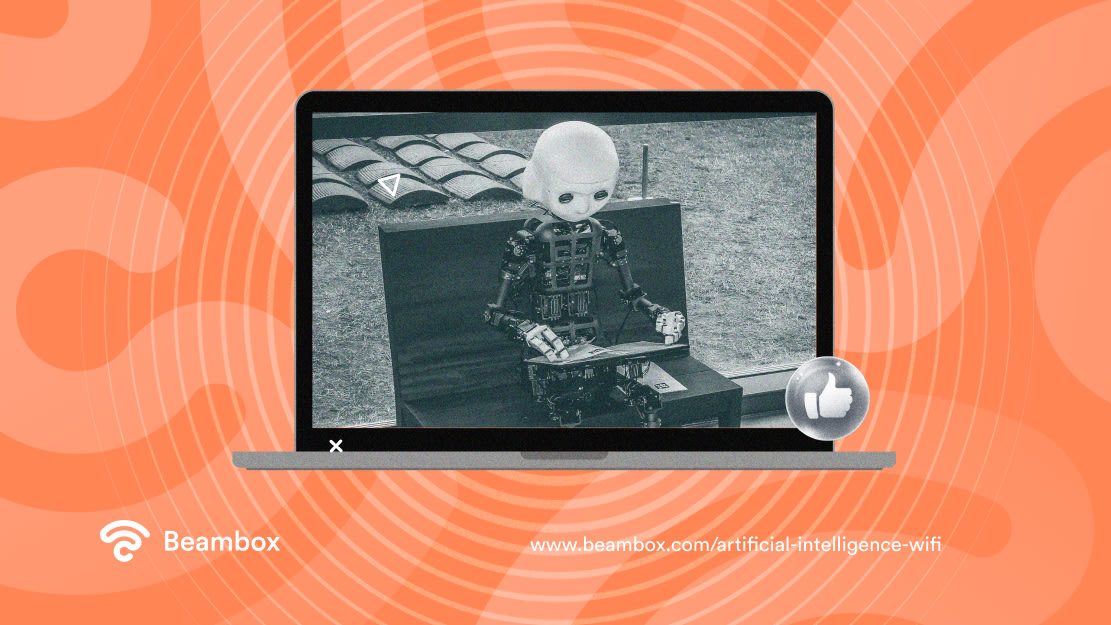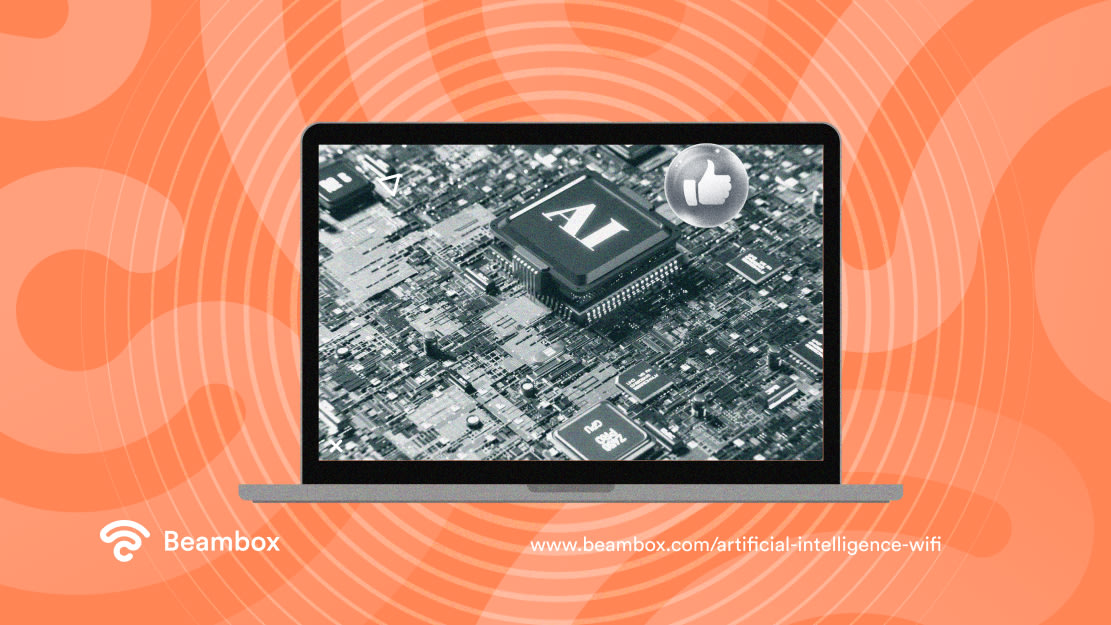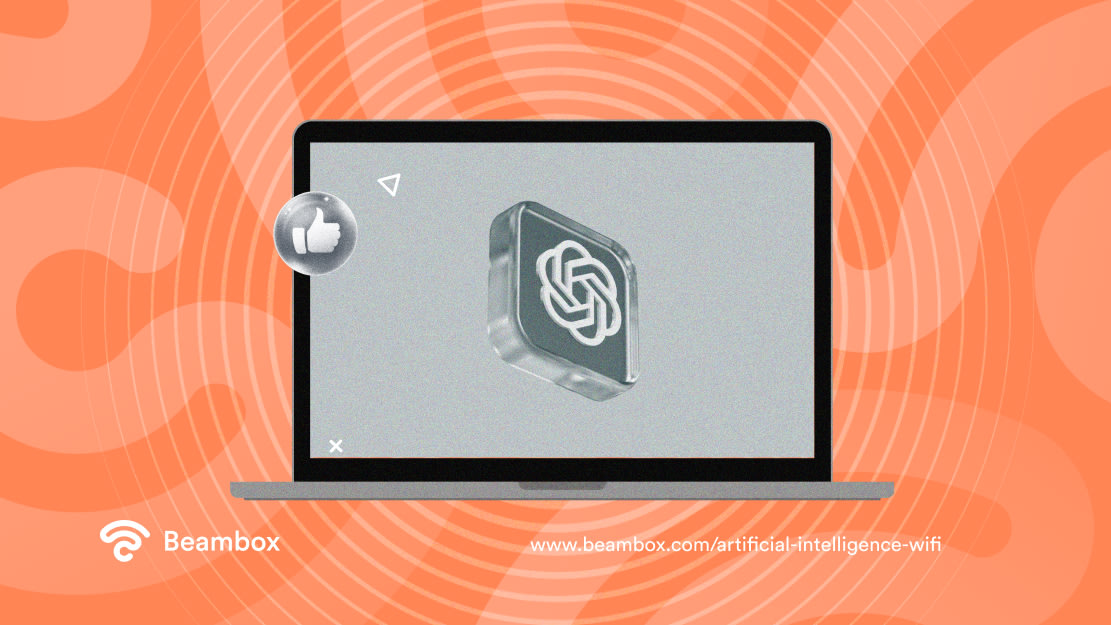Artificial intelligence (AI) has emerged as a transformative force in every industry and field. Its potential also affects the internet and WiFi industry, promising better performance, stability, and user experience (UX). However, integrating these technologies is more complicated than it seems, despite the hype around artificial intelligence WiFi.
This article explores the relationship between AI and WiFi, explaining how the integration of intelligent algorithms and wireless technology can happen. You will also read a breakdown of the benefits that this integration provides and what you can expect from it.

What Is Artificial Intelligence WiFi?
AI WiFi refers to the integration of AI technologies into WiFi networks to enhance their efficiency, reliability, and performance.
This involves the use of machine learning and deep learning algorithms to:
- Analyze vast amounts of network data in real time.
- Predict and prevent potential network issues.
- Optimize the resource allocation of the network.
- Improve UX.
AI WiFi systems can automatically adjust network parameters for optimal performance. They will ensure seamless connectivity for a large number of devices, all while minimizing the need for manual intervention.

How Artificial Intelligence and WiFi Interact
To understand how AI and WiFi interact, it is important to define the two:
- WiFi infrastructure: This includes routers, access points, and other network hardware that provides wireless internet connectivity.
- AI systems: These are software systems that analyze network data, make decisions, and implement actions based on machine learning models.
The ultimate goal of wireless AI internet interactions is to enhance the performance and efficiency of the network. These technologies cooperate in a variety of ways:
- Data analysis and pattern recognition: AI systems analyze vast amounts of data generated by WiFi networks. For example, data on traffic flow, device connectivity, signal strength, and network usage. WiFi artificial intelligence algorithms process this data through image-based approaches. These allow us to understand network behavior, user demand, and potential bottlenecks in the network.
- Predictive maintenance and problem-solving: By recognizing patterns and predicting potential issues, AI can forecast network failures or congestion before they happen. This allows for preemptive action to prevent downtime or degraded service.
- Resources optimization: AI dynamically allocates network resources like bandwidth and routing paths to optimize performance. Adjusting the allocation of resources ensures optimal performance for network users.
- Security: AI algorithms detect unusual patterns that may indicate security threats, such as unauthorized access or cyber-attacks. The analysis will be much faster and more accurate than traditional methods, ensuring more secure WiFi.
- UX: AI can customize the WiFi experience for individual users or devices, optimizing connection quality based on usage patterns.
AI systems act as a layer over the traditional WiFi infrastructure to enhance its capabilities and prevent human interactions.

8 Benefits of Artificial Intelligence for WiFi
Integrating Artificial intelligence into Wi-Fi networks brings transformative benefits in terms of efficiency, performance, and UXe. Here are eight key benefits:
- Improved network performance through dynamic optimization of bandwidth and signal strength.
- Increased network security by identifying and mitigating potential threats in real-time.
- Efficient network management by automating routine tasks and optimizing resource allocation.
- Reduced operational costs by minimizing manual intervention and optimizing energy consumption.
- Superior data analysis for better decision-making, using AI to analyze traffic patterns and user behavior.
- Enhanced capacity planning through predictive analysis of network demands and proactive infrastructure adjustments.
- Improved reliability and uptime, with AI algorithms quickly detecting and resolving network failures.
- Scalability of networks by enabling integration of new technologies and data demands.

How To Apply AI to Wireless Systems
Applying AI to wireless systems is not an easy task. The operational costs are high, as well as hardware requirements and know-how. To effectively apply AI to wireless systems, one would need:
- Data collection infrastructure: Tools and protocols for gathering data on network performance, user behavior, and device connectivity.
- Machine learning algorithms: Suitable algorithms for analyzing complex data and making predictions or decisions.
- Computational resources: Processing power and storage to handle the data analysis and model training.
- Integration capabilities: The ability to integrate AI models into existing wireless network infrastructure, such as routers and access points.
- Monitoring tools: Systems to monitor network performance and UX in real-time.
- Security protocols: Enhanced security measures to protect data and privacy during the AI implementation process.
- Expertise: Professionals who understand both AI and wireless network technologies to develop, deploy, and manage applications effectively.
Together, these elements facilitate the application of AI in wireless systems. Through continuous learning and adaptation, AI-driven networks can meet the evolving demands of users.
Other Technologies That Need To Upgrade To Have WiFi and AI Integrating Smoothly
Complementary technologies must evolve together to efficiently integrate WiFi and artificial intelligence, creating a seamless ecosystem.
The first tech that needs to scale is the cellular network infrastructure. This allows the transition to 5G, enhancing AI capabilities with higher data rates, lower latency, and increased connectivity. Along with it, cloud computing systems must scale to provide the necessary resources for training and deploying complex AI models.
This will provide an elastic environment to adjust resources as needed across global WiFi networks. Considering the role of AI in analyzing information, big data analytics tools need to evolve, too. AI can work efficiently only by processing vast amounts of data from interconnected devices.
Lastly, the integration of WiFi and artificial intelligence also needs a significant modernization of the energy grid. As these technologies become more pervasive and demand more computational power, the energy grid must evolve to support them efficiently.
While these technologies seem field-specific, they require advancement in other fields to fulfill their promise. Although these advancements seem far, they happen at a quicker rate than ever before in history. Therefore, change will arrive faster than one can imagine.
Using Tech To Scale Your Business
As mentioned, AI for wireless connection can provide significant benefits to anyone using the internet today. Without a doubt, users will enjoy faster and smoother internet connection, thanks to the capacity of neural networks.
Businesses will especially be able to provide better WiFi to their customers and exploit significant benefits from this technological advancement. However, those days are still far.
Nonetheless, you don’t need to wait for artificial intelligence WiFI to get better business results if you are running a business. Try out Beambox WiFi marketing and leverage your guest WiFi.
Beambox allows you to collect data from users to improve the customer experience and your marketing campaigns. Moreover, Beambox makes it simple to secure your connection with rotating passwords and easy-to-implement captive portals.
Over 12000 businesses are using Beambox to scale their operations and increase their profits through WiFi marketing. Start your 30-day free trial now!
Get Started With Free WiFi Marketing
Beambox helps businesses like yours grow with data capture, marketing automation and reputation management.
Sign up for 30 days free